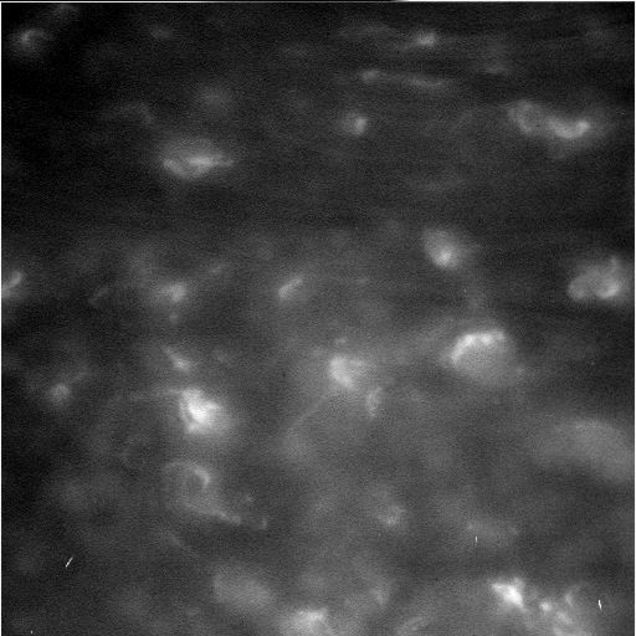Cassini Returns Ghostly Images of Saturn’s Atmosphere as It Narrowly Avoids Destruction

(image: NASA/JPL-Caltech/Space Science Institute)
As we reported just a few days ago, the Cassini orbiter is settling into its final death throes as it begins to descend into Saturn’s atmosphere. Recently, it dipped between Saturn itself and the planet’s innermost rings, a region previously never explored by any spacecraft. According to Engadget, the project manager for Cassini, Earl Maize, said, “No spacecraft has ever been this close to Saturn before. We could only rely on predictions, based on our experience with Saturn’s other rings, of what we thought this gap between the rings and Saturn would be like. I am delighted to report that Cassini shot through the gap just as we planned and has come out the other side in excellent shape.”
Apparently, Cassini is more or less unscathed by its initial plunge, a far cry from the premature death many on the team had feared. Interestingly enough, the team opted to use Cassini’s satellite dish as a shield to guard the orbiter from potentially unseen or other unknown elements or particles that could have resulted in the orbiter’s destruction. To do this, Cassini would be forced to go dark and couldn’t transmit back to Earth for a while. It came back online today at 2:56 AM EDT.
We did it! Cassini is in contact with Earth and sending back data after a successful dive through the gap between Saturn and its rings. pic.twitter.com/cej1yO7T6a
— CassiniSaturn (@CassiniSaturn) April 27, 2017
Again, Cassini’s final dive into Saturn is scheduled for September 15th. Up until that fateful day, Cassini will continue to dive closer and closer to Saturn, hopefully returning each time with more and more data for us to pore over back here on Earth.
Speaking of returning with data: NASA has a fine collection of some of the photos Cassini took of Saturn’s atmosphere. They are, as Gizmodo so succinctly put it, quite hauntingly beautiful.
(image: NASA/JPL-Caltech/Space Science Institute)
(image: NASA/JPL-Caltech/Space Science Institute)
There’s something that really mystifies me about that second photo and its ghostly white spectral figures that seem to orbit around a dark eye with a lone point of light at the center. It’s really quite something.
Jim Green, director of the Planetary Science Division at NASA, said in a statement, “In the grandest tradition of exploration, NASA’s Cassini spacecraft has once again blazed a trail, showing us new wonders and demonstrating where our curiosity can take us if we dare.”
Simply beautiful. Excellent work, NASA and Cassini!
Want more stories like this? Become a subscriber and support the site!
—The Mary Sue has a strict comment policy that forbids, but is not limited to, personal insults toward anyone, hate speech, and trolling.—
Have a tip we should know? tips@themarysue.com